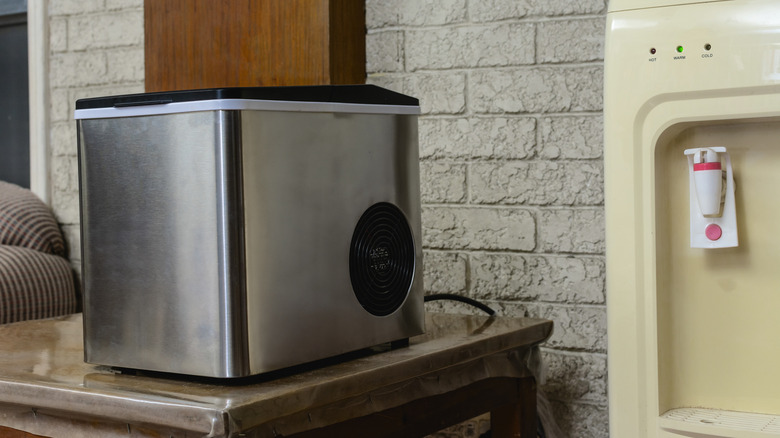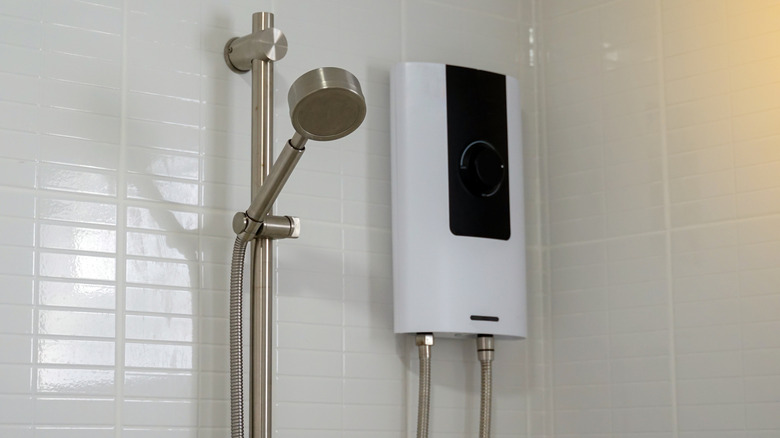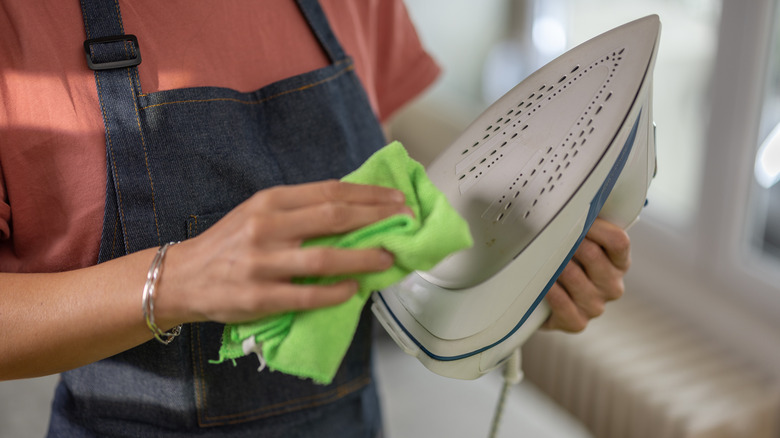22 Home Appliances You Are Probably Forgetting To Clean
After banishing wine stains from your granite countertops, vacuuming your rugs and carpets, and cleaning your attic, you'd think you have the deep cleaning routine down. But before you hang up your cleaning gloves and reward yourself with chocolate chip cookies for a job well done, consider the state of your home appliances. Are they squeaky clean inside and out? Chances are that behind all that sparkly exterior, your toaster is turning into a catacomb for burnt crumbs or your electric kettle is harboring mineral deposits. Worse yet, your washing machine and dishwasher could be nurturing moldy growth in their filters or spray arms. Also, hasn't it been some time (maybe since you first purchased it) since you checked your refrigerator's top or its maze of coils?
With a myriad of responsibilities and work commitments consuming most of our time, forgetting to clean some places in our homes including our household appliances is normal. Unfortunately, dust, grime, and germs are always building up where they're highly undesired, birthing numerous health problems and illnesses. They lower appliance efficiency, hiking up energy bills and shortening replacement cycles. In case an appliance overheats, it can turn hazardous, too. So, to keep such risks at bay and help you maintain a tip-top home, here are 22 home appliances you're probably forgetting to clean.
Washing machines require regular cleaning
While it's tempting to believe the home appliance that's responsible for keeping your clothes fresh and spotless would simultaneously keep itself clean, that's far from the truth. In reality, every wash cycle ensures the removed bacteria, viruses, and fecal germs accumulate inside the washer, along with mineral deposits, tempering with the machine's performance. It's important to either run a germicidal cycle (if your machine has it) or run a cloth-free cycle with water and bleach every week or every other week, depending upon how often it's used. Moreover, clear out the filter and detergent dispensers to remove lint and residue gunk.
Wipe down the dryer's lint screen bi-yearly
Although you must remove lint from your dryer's lint screen after every load, it's also crucial to less frequently wash off this screen as well. This is because, if you don't scrub it with a brush and hot water every so often, fabric softener and detergent will accumulate on the surface, making it less effective. Worse, germs will join the party if you've done a poor job cleaning your washer. This will increase load times and could even turn into a fire hazard. So, deep clean the lint screen and vents every six months or sooner if you use it frequently.
Service your air conditioner's filters every month in use
Aside from cooling your home, air conditioners also behave as filters for particulates and mold spores, which ultimately amass upon the filters, coils, and condensate channels. Such clogging restrains the air conditioner's performance, raising cooling times. Since removing this dust buildup can reduce energy use by up to 15% (per the EPA), scrub the filters clean with antibacterial wipes and vacuum the dust bunnies from coils monthly. Concurrently, run a stiff wire through condensate channels to prevent mold and weird smells, and check your outdoor units for dust.
Exhaust fans demand monthly upkeep
Habitually check the condition of your installed exhaust fans to avoid fire hazards and poor indoor air quality. Popular areas include kitchens, bathrooms, or spaces that need venting out of fumes and odors. Since these appliances often gather dirt, debris, and microbes, such blockages can impair their performance if they don't receive regular maintenance. So, dust their vent covers monthly and give them a deep clean every quarter. Soak them in a soapy solution (mix in baking soda to remove grease) and scrub away the caked gunk.
Clean dishwasher drains and seals weekly
Wiping down your dishwasher's exterior while you're hurriedly scrubbing down your kitchen cabinets every week isn't enough. You must also pay attention to its seal, and clean it with a bleach solution before it traps harmful microbes. Easing out its filter and cleaning it with detergent and warm water becomes necessary when the dishwasher gives off a moldy odor. Use a clever toothpick hack to clean out the spray arms. Since banishing the nasty debris and descaling the inside is par for the course, running the appliance on its hottest cycle after adding dishwasher cleaner is equally essential.
Refrigerator coils and door seals need TLC
Refrigerators harbor a plethora of germs, with mold making an entrance sometimes. This is due to the stored (and soiled) meat, cheese, fruits, and plenty of other items that you consume. That's why the cleaning buck doesn't stop at that weekly maintenance. Chances are that dust bunnies have collected on your fridge's top (out of sight doesn't justify out of your cleaning routine), on the gaskets, and at the bottom or behind its condenser coils, impairing your fridge's functioning. If not monthly, hoover or wipe them at least annually to save on energy bills.
Don't forget your microwave
Open your microwave door, and its interior is likely to reflect a multitude of caked-on or burnt food stains and spatters (like last night's spaghetti). These spills and splatters eventually become hotbeds for bacteria. Worse, many of them land in the oven's cold spots and spread rapidly. Not to mention, the door itself harbors innumerable germs, many of which were likely housed on your kitchen's countertop or other appliances. Given that, regularly wiping down the microwave door and handle with antibacterial wipes is crucial. Plus, steam the interior with a water and vinegar solution on a bi-weekly or monthly basis.
Toasters should be cleaned after every four uses
A recent YouGov survey found that 9% of Americans have never cleaned their toasters, despite them housing innumerable charcoal bread crumbs. And, no; unplugging and turning the toaster upside-down to release those crumbs isn't enough to label it "clean." This overlooked appliance should ideally be cleaned after every four uses. Wipe the crumb tray down with a soapy water solution while its innards are swept with a vinegar-soaked soft cloth or an old toothbrush (time for some upcycling!). Follow up with a thorough wipe from a damp cloth to get all the residue out.
Clean your coffee maker frequently
Why wait until your morning brew starts tasting or smelling slightly funky? Instead, get in the habit of cleaning your coffee maker every month. Although the routine might seem excessive, it's well worth a joyful start to the day. After emptying it of any water or grounds, fill the water reservoir with clean water and vinegar in a 1:1 ratio and turn it on. This should get rid of any scaling. After you're done, wipe its exterior down with a sponge or rag. Run the coffee maker with plain water afterward to get it as clean as new.
Electric can openers must be cleaned regularly
Electric can openers are a huge blessing, especially when you need to slice open hardy pet food cans and those stubborn tomato puree cans. Yet they're rarely cleaned, if at all. But they should be, as they can get quite dirty if used regularly. Wipe any food splatters right away and take some time out every month to sanitize the unit. To elaborate, the cutting wheel should be freed of the appliance and soaked in warm, soapy water every month. Any encrusted goop should be brushed away or wiped clean with a soap-soaked sponge or toothbrush, followed by a damp microfiber cloth.
Clean electric kettles quarterly
Tea lovers who rely on their electric kettles to make their favored English tea must also contend with some not-to-forget maintenance work. If any water is left in the kettle, this can leave mineral deposits that sometimes even float up top, spoiling your drink and hurting the appliance's performance. For this reason, you must descale your kettle every quarter (or more often, per your manufacturer's instructions). Just boil water and vinegar in a 3:1 ratio. Pour out the solution the next day and reboil with plain water. Also clean the lid and base with a damp rag.
Humidifiers require frequent maintenance
Ultrasonic, impeller, and standing water-holding humidifiers are bound to develop a thick layer of mineral deposits. They can also harbor water-borne bacteria like Legionella that can persist for extended durations at high temperatures (nearing 150 degrees Fahrenheit). This can be problematic, as these deposits can be released with the mists, triggering allergies and worsening respiratory problems. Although using distilled or demineralized water minimizes such exposure, you must clean out portable humidifiers every three days (or sooner, as the label recommends). Emptying the water container daily also curbs microbe buildup, limiting upkeep and maintenance requirements.
Rice cookers require recurrent cleaning
Love to push the "Keep Warm" button on your rice cooker? In that case, clearing out the encrusted, charred remains of rice would be quite the task. Unfortunately, there's more to cleaning the rice cooker than its inner pan. You must clean its inner lid (or wash it in soapy water if it's detachable) since the steam carries a fair amount of starch, leaving it coated in an unsightly white layer. Other parts like the condensation cleaner, heating sensor, and the crannies between buttons also require frequent cleaning to ensure top-notch food sanity.
Clean your smoke alarms twice a year
Before you dismiss the idea of wiping down your smoke alarms every six months as excessive, remember that nearly 60% of fire deaths occurred where smoke alarms were either missing or non-functional (via NFPA). While these safety appliances are ceiling-mounted, they still collect dust, grease, and fumes from pets, cooking, and smoking, eventually becoming clogged and less effective. So, twice a year, you should mount a ladder and give your smoke alarm a thorough, dry wipe with a microfiber cloth to ensure proper functioning. Also remove the unit and dust its innards and air vents.
Portable ice makers need quarterly descaling
Isn't it nice to have a ready supply of perfectly-sculpted ice cubes to keep your favorite drinks cold? However, cleaning the ice maker every three months is essential, lest your cubes turn cloudy. Delaying it only gives mold, limescale, and bacteria free reign (yikes!). Use the self-cleaning cycle per the instruction manual if your appliance has one. Or, DIY a cleaning solution with equal parts water and white vinegar and pour it into your ice maker after tipping out the cubes and any remaining water.
Air fryers must be cleaned often
Air fryers have certainly made hosting friends easier for games and late-night hangouts, but to keep the party going, you must keep them clean, too. While you probably already take care of all the charred food remains and barely-there grease harboring inside the basket and trays after every use, there may be other parts you haven't been paying attention to, like the heating coils. These coils can develop a thick layer of gunk if they aren't cleaned every few months with a damp cloth. Similarly, your air fryer's exterior requires some wiping after every few uses to keep it looking spic and span.
Clean out your vacuum's filter every month
From creeping crawlies and their egg sacs to dust bunnies, spider webs, and pet dander, there's plenty of debris that your hoover sucks up on the daily or weekly, depending how often you use it. It all adds up inside the filter, and forgetting to clean it regularly — or at least every month — turns the vacuum inefficient. Follow the user manual to go about the filter cleaning business. Foam filters typically turn sparkly after soaking in a soapy solution, while HEPA filters only require a cool water rinse. Also wipe down the inside and outside of the vacuum with a damp rag.
Flush out the water heater yearly
Hot showers and bubbly baths are the perfect way to relax after a long day. But to ensure you don't miss out on these recreational benefits nor mess up your home's piping with all the silt, rust, and sediment accumulation, drain out the water from your water heater's expansion tanks at least once a year. This way, you can also prevent the buildup of putrid odors, discolored or reduced water flow, or creepy sounds in your pipes that ring at night. Follow these tips to know how and when to drain a water heater.
Robot cleaners need periodic cleaning
If you've finally delegated the arduous task of cleaning your floors to a robot vacuum, make sure it's up to the task by swiping it clean periodically. Apart from removing any entangled hair and dander from its bristles, you must remove any stains and smears from its sensors with a microfiber cloth (or as the manual recommends), lest it mistakes your pet for something to be hauled up. Also, now and then sponge its wheels with a damp cloth to eliminate grime, besides clearing out its dustbin to avoid blockages.
Remove stains from the steam iron every month
Whether you love it or hate it, ironing is the necessary evil you need to rid your clothes of unsightly wrinkles and pull off the semblance of an adult who has their life together. However, your hot iron tends to develop hues of stains and mineral deposits on the soleplate, along with the steam vents, that can rub onto your clothes if not cleaned every month (or less often if you aren't an avid user). There are specific products you can use to remove these stains. Its water reservoir also requires emptying after every use to prevent mold spores from docking inside.
Desk fans may require weekly dusting
If you've set up a cute little workspace in your home that's furnished with bright lights and desk fans, you might be due for some weekly cleaning. Dust and muck can settle on their blades when used daily, becoming worse if you're a keen fan of aerosol-based beauty products (all those body mists) or heat your meals close by. Every week, break out your blow dryer, run it on its coolest settings, and direct its air at the fan blades to blow out the dust — a handheld vacuum will work as well. Then wipe its exterior with a damp cloth.
Frequently clean the bidet panels
Mercifully, most bidets come armed with self-cleaning nozzle wash features that can be run both pre- and post-use to ensure adequate maintenance and hygiene. However, their control panels don't receive such care as often, but they should be cleaned at least on a weekly basis. All you have to do is grab a clean microfiber cloth, slightly wet it with water (not too wet), and rub it across the panels. Should you feel the necessity of a cleaner, stick to mild dish soap. Once a year, clean out the deodorizer filter with a toothbrush (after detachment) and rinse it clean.






















